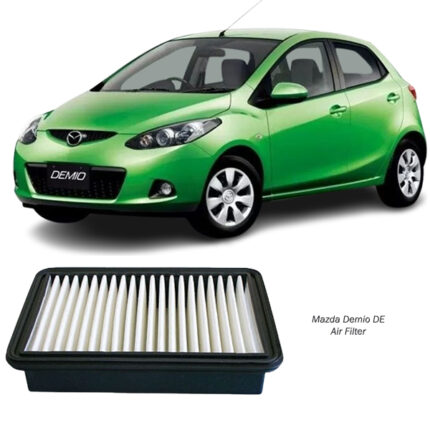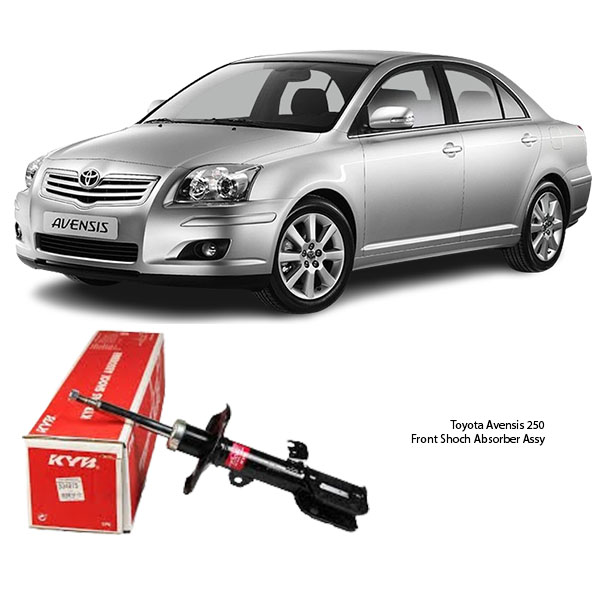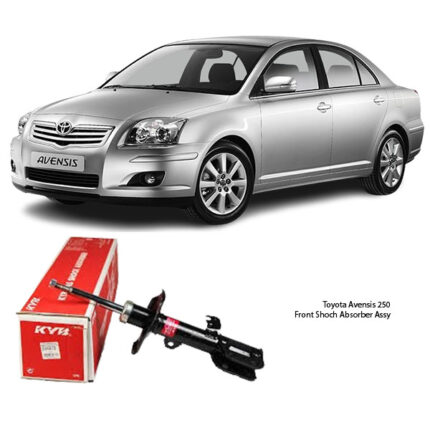Get Toyota Avensis 250/251 Front Shock Absorber Assy 334815 / 16 in Kenya
A front shock absorber assembly is a vital component of a vehicle’s suspension system. It ensures a smooth ride by absorbing road impacts, improving stability, and enhancing overall driving comfort. Whether you drive on smooth highways or rough terrain, a well-functioning shock absorber helps maintain vehicle control and safety.
What is a Front Shock Absorber Assembly?
A front shock absorber assembly (also called a damper) is a part of your car’s suspension system. It absorbs and dissipates kinetic energy from road bumps, potholes, and uneven surfaces, ensuring your car remains stable, comfortable, and easy to control.
Components of a Front Shock Absorber Assembly
Shock Absorber (Damper) – The main component that absorbs shocks
Coil Spring (If part of a Strut Assembly) – Helps absorb impact and support vehicle weight
Mounting Bushings – Rubber or polyurethane parts that cushion vibrations
Piston & Hydraulic Fluid – Controls motion through resistance
Dust Cover/Boot – Protects the shock from dirt and debris
The front shock absorbers take more impact than the rear ones since they handle the steering and weight transfer of the vehicle.
Function of a Front Shock Absorber
The shock absorber assembly plays a crucial role in:
Damping Road Impacts – Reduces vibrations and jolts from bumps and potholes
Improving Handling & Stability – Ensures better cornering and steering response
Reducing Tire Wear – Prevents uneven tire contact with the road
Enhancing Braking Performance – Helps maintain traction during braking
Increasing Ride Comfort – Smoothens the ride for passengers
Without functional shock absorbers, your vehicle would bounce excessively, making it difficult to control and unsafe to drive.
Types of Front Shock Absorbers
There are different types of shock absorbers based on design and performance needs.
Twin-Tube Shock Absorbers
Most common type
Uses two tubes (inner and outer) for oil displacement
Cost-effective and durable
Suitable for daily driving
Monotube Shock Absorbers
Higher performance than twin-tube
Single tube with gas and oil separation
Offers better heat dissipation and damping control
Used in sports and performance vehicles
Gas-Charged Shock Absorbers
Reduces foaming in hydraulic fluid for consistent performance
Provides firmer handling and stability
Ideal for high-speed driving and rough roads
Coilover Shock Absorbers
Combines shock absorber and coil spring in one unit
Allows height and stiffness adjustments
Used in racing and performance vehicles
Adjustable Shock Absorbers
Can adjust damping stiffness
Used in performance and off-road vehicles
Ideal for drivers who want custom ride settings
Choosing the right shock absorber depends on your driving style and road conditions.
Signs Your Front Shock Absorbers Need Replacement
A worn-out shock absorber can lead to unstable driving and poor handling. Watch out for these signs:
Excessive Bouncing – Car continues bouncing after hitting bumps
Poor Steering Response – Harder to control the vehicle during turns
Longer Braking Distance – Reduced traction increases stopping distance
Uneven Tire Wear – Cupped or bald spots on tires
Leaking Hydraulic Fluid – Visible oil leakage from the shock absorber
Noisy Suspension – Clunking or knocking sounds over bumps
Vehicle Nose-Dives When Braking – Front end dips forward heavily
If you notice any of these symptoms, it’s time to replace your front shock absorbers.
How Often Should You Replace Your Front Shock Absorbers?
Recommended Replacement Interval:
80,000 – 120,000 km (50,000 – 75,000 miles) under normal driving conditions
40,000 – 80,000 km (25,000 – 50,000 miles) for rough terrain or aggressive driving
If you frequently drive on bad roads, tow heavy loads, or participate in high-speed driving, you may need earlier replacements.
How to Replace a Front Shock Absorber?
Replacing a front shock absorber assembly requires mechanical skills and tools.
Tools Needed:
Jack & jack stands
Socket & wrench set
Spring compressor (for struts)
Torque wrench
New front shock absorbers
Step-by-Step Process:
Lift the Car & Remove the Wheel – Use a jack and secure the car with stands
Unbolt the Old Shock Absorber – Disconnect from suspension components
Remove the Coil Spring (if applicable) – Use a spring compressor
Install the New Shock Absorber – Ensure correct alignment
Reassemble Suspension Components & Tighten Bolts – Use a torque wrench
Reattach the Wheel & Lower the Car
Test Drive & Check for Issues – Ensure smooth performance
Caution: If your car has MacPherson struts, you may need professional tools to compress the spring safely.
Maintenance Tips for Longer Shock Absorber Life
Avoid Overloading Your Vehicle – Reduces stress on the shocks
Drive Carefully Over Bumps & Potholes – Prevents excessive wear
Check for Leaks & Damage Regularly – Spot issues early
Replace in Pairs – Ensures balanced handling and stability
Perform Routine Suspension Inspections – Every 20,000 km
A well-maintained suspension ensures a comfortable and safe driving experience.
Follow us on Facebook for more parts.




